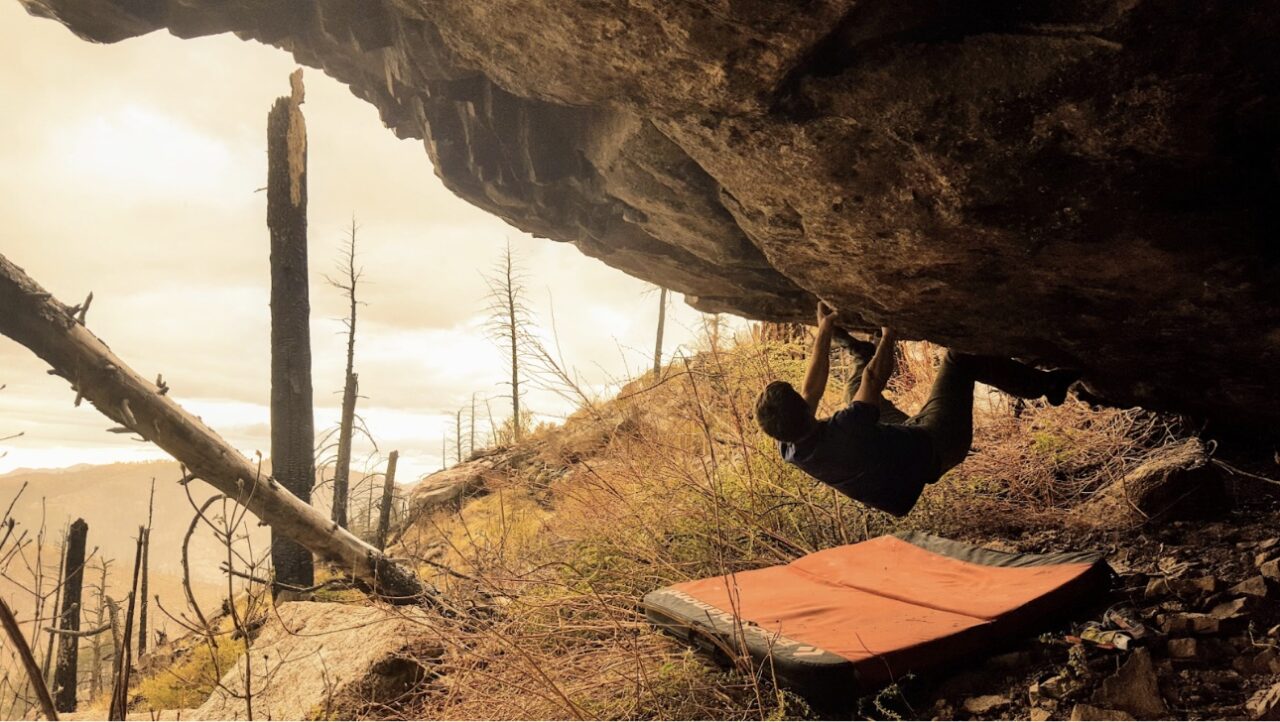By: John Crawley, PT, DPT, OCS
Rock climbing, like all other sports, has risk factors that contribute to injury rates. Knowing what factors contribute to added injury risk can help participants build better training programs and potentially reduce future risk of injury. Luckily, researchers have begun to ask these questions and have made progress in identifying factors that can lead to injury. Climbing injuries can be roughly categorized into two groups; traumatic which occur with falls and non-traumatic which are often called overuse injuries. Of the two, overuse injuries are of most interest as they make up 93% of all injuries reported in the general climbing population.1
A recent systematic review by Quarmby et al. (2023) identified several factors that correlate with an increased risk of overuse injuries in adult climbers. Researchers found that higher climbing intensity is strongly associated with a greater risk of injury.2 This relationship was observed across multiple studies, indicating that as climbers engage in more difficult climbing, the likelihood of sustaining an overuse injury increases. Climbing difficult routes and boulder problems places greater stress on the body’s tissues. Larger moves require greater force generation and faster movement speeds that place higher demand on the body. Additionally, harder climbing often places the shoulders and hips in extreme positions. These extreme positions place a large demand on the connective tissue and stabilizing muscles around the joint. Initially an athlete is likely to have the capacity to withstand the demands of these hard moves but with repeated efforts attempting to complete hard moves the body can wear down leading to a breakdown in the tissues quality and thus cause injury.
Bouldering, a specific type of climbing, was also found to be a significant risk factor for traumatic and overuse injuries. In parallel to higher difficulty climbing, bouldering often includes more dynamic and difficult movements than route climbing that can contribute to greater injury risk. Moreover, the dynamic and powerful nature of bouldering, combined with shorter rest periods, may contribute to the higher injury risk. Lastly, bouldering has greater impact as the climber will fall to the ground with failed attempts on the wall. Falling comes with inherent risk, there is opportunity to land off balance or unprepared which can lead to acute injury and overuse injuries over time if the forces in landing are not well attenuated by the athlete.
Use of a crimp grip, which is a common hand position in climbing where the fingers are bent at sharp angles to grip small holds, was found to be a risk factor for overuse injuries of the fingers and hand when over utilized. This grip is often used when the movement becomes difficult for the climber or the hold size gets too small to keep an open handed grip on the hold. Use of the crimp grip places a tremendous amount of load on the pulleys and tendons of the hand. With chronic use and without variability in grip, the tissues of the hand can become damaged over time.
Additionally, previous injuries were also a strong predictor of future injuries, indicating that climbers who have experienced overuse injuries in the past are at a higher risk of re injury (3,4). Several factors are likely at play with this correlation. First, individuals with previous injury often have deficits in strength that may predispose the individual to further injury.5 Secondly, behavioral and training practices may underscore the association between previous injury and further injury. That is, individuals who repeatedly get injured may subject themselves to poor training practices such as long sessions, climbing in highly fatigued states, or climbing too frequently.
Positively modifying risk includes controlling climbing intensity, training volume, grip type, and type of climbing. It is suggested that climbing intensity should vary throughout the training week. Avoid limit bouldering, completing max hangs, or campusing in the same session or on consecutive days. Work to limit the amount of high intensity movements/lifts completed within the same session. Vary grip position based hold type and intensity of the movement. Work to use open handed positions as the primary grip type. Lastly, consider mixing bouldering with sport climbing to vary climbing participation.
Click Here to schedule your next appointment with the experts at MEND
Citation:
- Backe S, Ericson L, Janson S, Timpka T. Rock climbing injury rates and associated risk factors in a general climbing population. Scand J Med Sci Sports. 2009;19(6):850-856. doi:10.1111/j.1600-0838.2008.00851.x
- Quarmby A, Zhang M, Geisler M, et al. Risk factors and injury prevention strategies for overuse injuries in adult climbers: a systematic review. Front Sports Act Living. 2023;5:1269870. Published 2023 Dec 12. doi:10.3389/fspor.2023.1269870
- Auer J, Schöffl VR, Achenbach L, Meffert RH, Fehske K. Indoor Bouldering-A Prospective Injury Evaluation. Wilderness Environ Med. 2021;32(2):160-167. doi:10.1016/j.wem.2021.02.002
- Jones G, Llewellyn D, Johnson MI. Previous injury as a risk factor for reinjury in rock climbing: a secondary analysis of data from a retrospective cross-sectional cohort survey of active rock climbers. BMJ Open Sport Exerc Med. 2015;1(1):bmjsem-2015-000031. Published 2015 Aug 27. doi:10.1136/bmjsem-2015-000031
Orth D, Slebioda N, Cavada A, van Bergen N, Deschle N, Hoozemans M. Persistent Unilateral Force Production Deficits Following Hand Injury in Experienced Climbers: A Reliability and Retrospective Injury Study. Wilderness Environ Med. 2023;34(1):22-30. doi:10.1016/j.wem.2022.10.001

